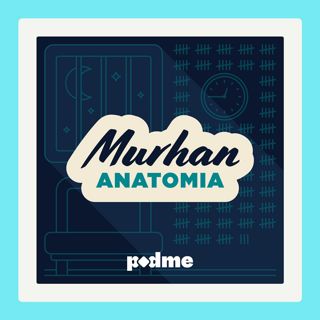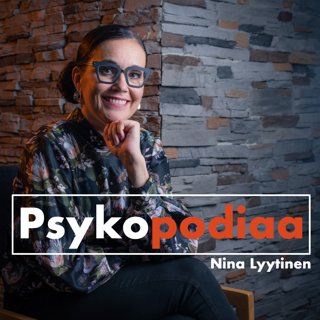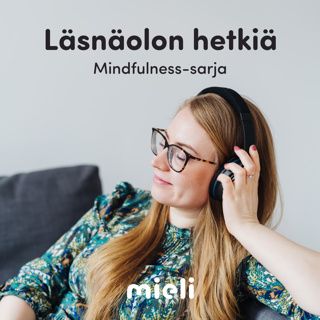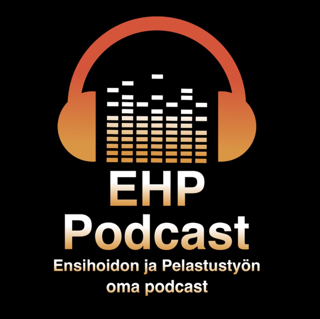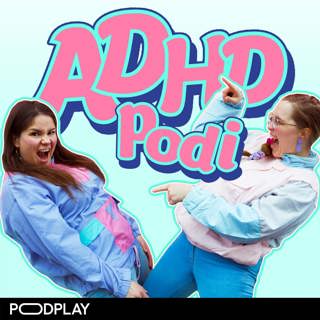
Episode 17 Preview
Subscribe on iTunes Subscribe on Google Play Subscribe on Stitcher Behavior analysts collect so much data, yet we don't always think about why. Are there ethical standards which we should take into account with our data collection procedures? Dr. Amanda Karsten sure thinks so and she'll be joining us on next week's episode to provide some great tips on how to take ethical data. And in Errata we continue the debate between whether BCBAs should be more warm and fuzzy or more clinical-sounding. Plus, Mr. Rogers versus Mr. Dress Up. Articles for next week: LeBlanc, L.A., Raetz, P.B., Sellers, T.P., & Carr, J.E. (2016). A proposed model for selecting measurement procedures for the assessment and treatment of problem behavior. Behavior Analysis in Practice, 9, 77-83. doi: 10.1007/s40617-015-0063-2 Vollmer, T.R., Sloman, K.N., & St. Peter Pipkin, C. (2008). Practical implications of data reliability and treatment integrity monitoring. Behavior Analysis in Practice, 1, 4-11. Carey, M.K. & Bourret, J.C. (2014). Effects of data sampling on graphical depictions of learning. Journal of Applied Behavior Analylsis, 47, 749-764. doi: 10.1002/jaba.153
5 Loka 201618min

Episode 16 - Increasing On-Task Behavior with ADHD
Subscribe on iTunes Subscribe on Google Play Subscribe on Stitcher Since medication for ADHD isn't the only treatment in town, what behavioral interventions can help students take part in the important parts of learning? Like staying on-task with schoolwork for instance. This week we review how functional analyses, good peer models, and sounds of the cosmos can decrease off-task behavior in children. And are you a behavior analyst with no experience working with individuals with ADHD? Let our introductory summary get you started on understanding this chronic disorder. And, in the spirit of the research, we actually manage to keep our typical tangents to a minimum. Like maybe only 10% of the running time if you don't count Jackie and Rob making white-noise sound effects. Articles discussed this episode: Flood, W.A., Wilder, D.A., Flood, A.L., & Masuda, A. (2002). Peer-mediated reinforcement plus prompting as treatment for off-task behavior in children with attention deficit hyperactivity disorder. Journal of Applied Behavior Analysis, 35, 199-204. doi: 10.1901/jaba.2002.35-199 Grauvogel-MacAleese, A.N. & Wallace, M.D. (2010). Use of peer-mediated intervention in children with attention deficit hyperactivity disorder. Journal of Applied Behavior Analysis, 43, 547-551. doi: 10.1901/jaba.2010.43-547 Cook, A., Bradley-Johnson, S., & Johnson, C.M. (2014). Effects of white noise on off-task behavior and academic responding for children with ADHD. Journal of Applied Behavior Analysis, 47, 160-164. doi: 10.1002/jaba.79 And, for some background on behavioral interventions for ADHD: Fabiano, G.A., Pelham Jr., W.E., Coles, E.K., Gnagy, E.M., Chronis-Tuscano, A., & O'Connor, B.C. (2009). Clinical Psychology Review, 29, 129-140. doi: 10.1016/j.cpr.2009.11.001 If you're interested in ordering CEs for listening to this episode, click here to go to the store page. You'll need to enter your name, BCBA #, and the two episode secret code words to complete the purchase. Email us at abainsidetrack@gmail.com for further assistance.
28 Syys 20161h 17min

Episode 16 Preview
Subscribe on iTunes Subscribe on Google Play Subscribe on Stitcher ADHD is an increasingly common disability seen most regularly in public schools. How can behavior analysis help? Next week, we'll be discussing research into increasing the on-task behavior of students with ADHD as well as reviewing some facts and figures related to overall treatment. Articles for next week: Flood, W.A., Wilder, D.A., Flood, A.L., & Masuda, A. (2002). Peer-mediated reinforcement plus prompting as treatment for off-task behavior in children with attention deficit hyperactivity disorder. Journal of Applied Behavior Analysis, 35, 199-204. doi: 10.1901/jaba.2002.35-199 Grauvogel-MacAleese, A.N. & Wallace, M.D. (2010). Use of peer-mediated intervention in children with attention deficit hyperactivity disorder. Journal of Applied Behavior Analysis, 43, 547-551. doi: 10.1901/jaba.2010.43-547 Cook, A., Bradley-Johnson, S., & Johnson, C.M. (2014). Effects of white noise on off-task behavior and academic responding for children with ADHD. Journal of Applied Behavior Analysis, 47, 160-164. doi: 10.1002/jaba.79 And, for some background on behavioral interventions for ADHD: Fabiano, G.A., Pelham Jr., W.E., Coles, E.K., Gnagy, E.M., Chronis-Tuscano, A., & O'Connor, B.C. (2009). Clinical Psychology Review, 29, 129-140. doi: 10.1016/j.cpr.2009.11.001
21 Syys 201614min

Episode 15 - Technology and Safety Skills Training
Subscribe on iTunes Subscribe on Google Play Subscribe on Stitcher We all know that while behavioral skills training is a research-based method for training an individual to mastery, it can take a long time. We all know that while training videos are super-fun, they have very little impact on promoting a skill to mastery. This week we talk to Dr. Nick Vaneslow about how he mixed peanut butter and chocolate and used CBST and in situ training to teach young children safety skills. The "C" is for computer. Plus, Dr. Vaneslow tells us about his personalized cardboard cut-out, Diana learns gun-safety skills, Jackie discovers that there are more than four dangers in the world, and Rob begs everyone for a million dollars to create educational apps that save the best sound effects for choosing the wrong answers. Articles discussed this episode: Vaneslow, N.R. & Hanley, G.P. (2014). An evaluation of computerized behavioral skills training to teach safety skills to young children. Journal of Applied Behavior Analysis, 47, 51-69. doi: 10.1002/jaba.105 If you're interested in ordering CEs for listening to this episode, click here to go to the store page. You'll need to enter your name, BCBA #, and the two episode secret code words to complete the purchase. Email us at abainsidetrack@gmail.com for further assistance.
14 Syys 20161h 8min

Episode 15 Preview
Subscribe on iTunes Subscribe on Google Play Subscribe on Stitcher We're all about using technology to improve teaching. But is there really anything out there worth using? We'll be chatting with Dr. Nick Vanselow, creator of CEU Helper, about how he used computerized behavioral skills training to tackle the very important issues of teaching children abduction prevention and fire safety skills. But first, we share technologies that we love to use to start off a new school year. And, if you aren't watching our YouTube channel, you missed a fabulous singing intro. Articles for next week: Vanselow, N.R. & Hanley, G.P. (2014). An evaluation of computerized behavioral skills training to teach safety skills to young children. Journal of Applied Behavior Analysis, 47, 51-69. doi: 10.1002/jaba.105
7 Syys 201627min

Episode 14 - Transitioning to Adulthood, part 2
Subscribe on iTunes Subscribe on Google Play Subscribe on Stitcher It's the second part of our shows on transitioning to adulthood and the challenges therein. This week we return to our typical format and discuss two articles related to needed vocational skills: asking for assistance with a vocational task and using an iPhone cueing system to perform as a fire safety mascot. Yes, you read that right: a fire safety mascot. If research about inflatable suits with an iPhone Velcroed inside was on your wish list, consider this show your friendly genie. And if you think the gifts stop there, you're in for a treat when Jackie shares her favorite Starbucks drink and Diana tells us what TV show she enjoys while falling asleep on the couch. Is anything more representative of adulthood than overpriced coffee and bad TV? P.S. from Rob: Please don't tell me how The Wire ends. Not cool, dude. Articles discussed this episode: Burke, R.V., Andersen, M.N., Bowen, S.L., Howard, M.R., & Allen, K.D. (2010). Evaluation of two instruction methods to increase employment options for young adults with autism spectrum disorders. Research in Developmental Disabilities, 31, 1223-1233. doi: 10.1016/j.ridd.2010.07.023 Dotto-Fojut, K.M., Reeve, K.F., Townsend, D.B., & Progar, P.R. (2011). Teaching adolescents with autism to describe a problem and request assistance during simulated vocational tasks. Research in Autism Spectrum Disorders, 5, 826-833. doi: 10.1016/j.rasd.2010.09.012 If you're interested in ordering CEs for listening to this episode, click here to go to the store page. You'll need to enter your name, BCBA #, and the two episode secret code words to complete the purchase. Email us at abainsidetrack@gmail.com for further assistance.
31 Elo 20161h 14min

Episode 13 - Transitioning to Adulthood, part 1
Subscribe on iTunes Subscribe on Google Play Subscribe on Stitcher We were so astonished at the paucity of research related to teaching adolescents and adults with autism that we decided to put together two full episodes to raise awareness about the topic. Our first episode summarizes many of the overall challenges that society and adults with autism will face in the coming years. Start by listening to Jackie, Rob, and Diana grapple with the big issues by making fun of educational videos and smiling politely at another Rob Rant about the government. End by listening to a fascinating interview with Dr. Peter Gerhardt in which he discusses the life skills nobody is talking about (or training on!), which target academics have already become obsolete, the goal every behavior analyst should strive to achieve, and what social interaction will replace the high five in America. Articles discussed this episode: Gerhardt, P.F. & Lainer, I. (2011). Addressing the needs of adolescents and adults with autism: A crisis on the horizon. Journal of Contemporary Psychoherapy, 41, 37-45. doi: 10.1007/s10879-010-9160-2 If you're interested in ordering CEs for listening to this episode, click here to go to the store page. You'll need to enter your name, BCBA #, and the two episode secret code words to complete the purchase. Email us at abainsidetrack@gmail.com for further assistance.
24 Elo 20161h 7min

Episode 13 and 14 DOUBLE-ALBUM Preview
Subscribe on iTunes Subscribe on Google Play Subscribe on Stitcher In this double-album edition of our preview episodes, we're talking about research on transitioning to adulthood for individuals with autism. In addition to our typical review of research related to the subject, we've got an interview with Dr. Peter Gerhardt, a leader in spreading awareness of the crisis that is special education services for adults. On the lighter side of things: the results of our filler speech challenge! Only one can win, though everyone gets candy. Also, errata featuring a fun link from a listener about standard celeration charts. Listen to the full episodes over the next two weeks (yes, back-to-back episodes) for maximum information and discussion. Articles for next week: Gerhardt, P.F. & Lainer, I. (2011). Addressing the needs of adolescents and adults with autism: A crisis on the horizon. Journal of Contemporary Psychoherapy, 41, 37-45. doi 10.1007/s10879-010-9160-2 And, while not a research article, a parent's perspective on the transition process: "Luke's best chance: One man's fight for his autistic son" from Rolling Stone magazine Articles for the week after that: Burke, R.V., Andersen, M.N., Bowen, S.L., Howard, M.R., & Allen, K.D. (2010). Evaluation of two instruction methods to increase employment options for young adults with autism spectrum disorders. Research in Developmental Disabilities, 31, 1223-1233. doi: 10.1016/j.ridd.2010.07.023 Dotto-Fojut, K.M., Reeve, K.F., Townsend, D.B., & Progar, P.R. (2011). Teaching adolescents with autism to describe a problem and request assistance during simulated vocational tasks. Research in Autism Spectrum Disorders, 5, 826-833. doi: 10.1016/j.rasd.2010.09.012
17 Elo 201620min


